iPhone 6 and iPhone 6 Plus: Preliminary Results
by Joshua Ho on September 22, 2014 7:07 AM EST- Posted in
- Smartphones
- Apple
- Mobile
- iOS
- iPhone 6
- iPhone 6 Plus
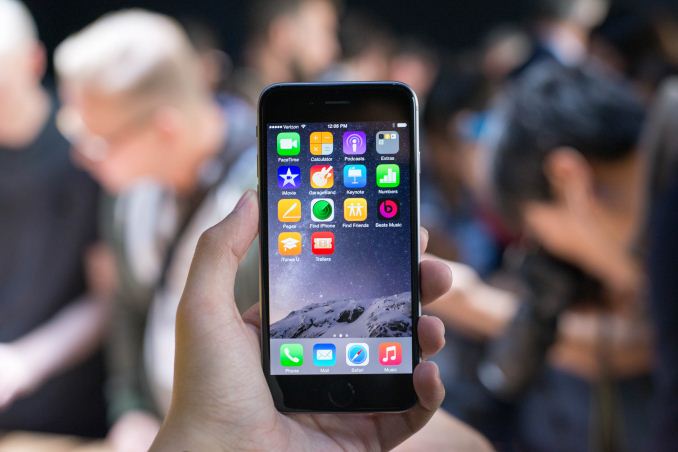
While we’re still working on the full review, I want to get out some preliminary results for the iPhone 6. For now, this means some basic performance data and battery life, which include browser benchmarks, game-type benchmarks, and our standard web browsing battery life test. There’s definitely a lot more to talk about for this phone, but this should give an idea of what to expect in the full review. To start, we'll look at the browser benchmarks, which can serve as a relatively useful proxy for CPU performance.
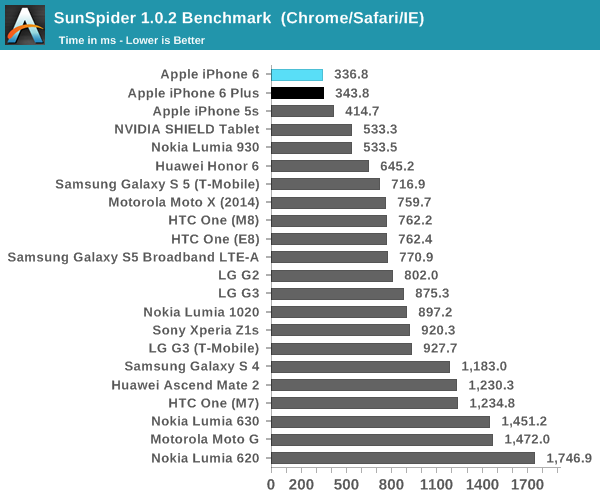
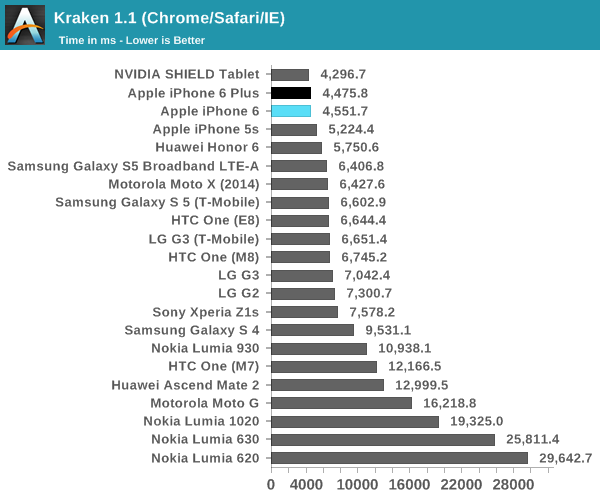
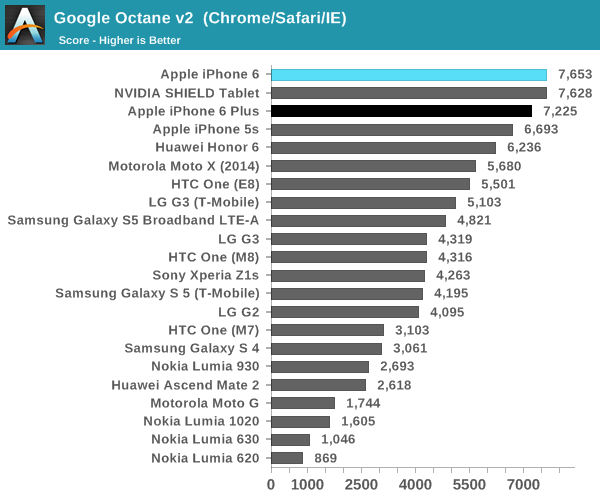
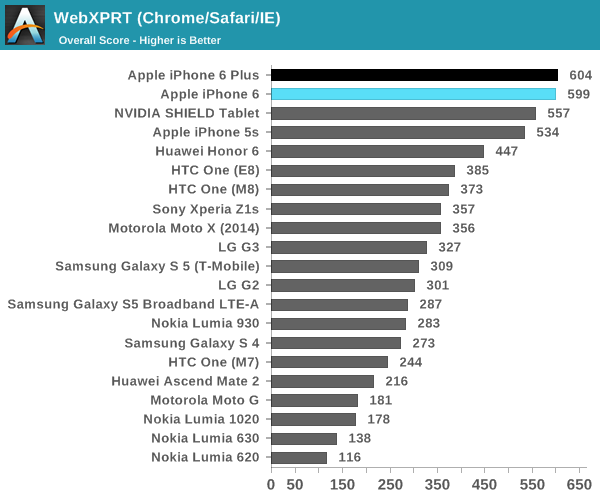
There are a few interesting observations here, as a great deal of the scaling is above what one would expect from the minor frequency bump when comparing A7 and A8. In SunSpider, we see about a 13% increase in performance that can't be explained by frequency increases alone. For Kraken, this change is around 7.5%, and we see a similar trend across the board for the rest of these tests. This points towards a relatively similar underlying architecture, although it's still too early to tell how much changes between the A7 and A8 CPU architectures. Next, we'll look at GPU performance in 3DMark and GFXBench, although we're still working on figuring out the exact GPU in A8.
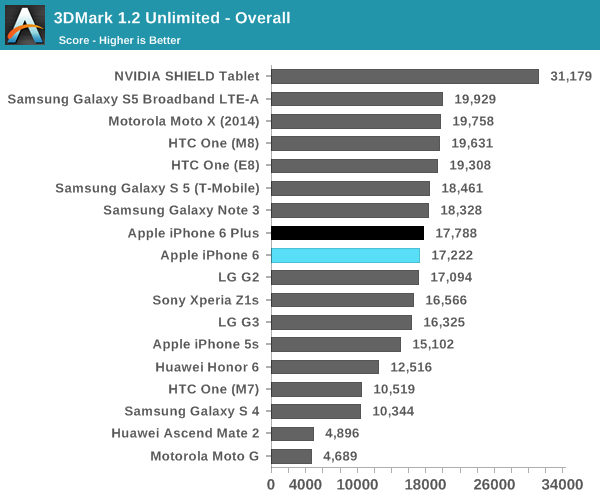
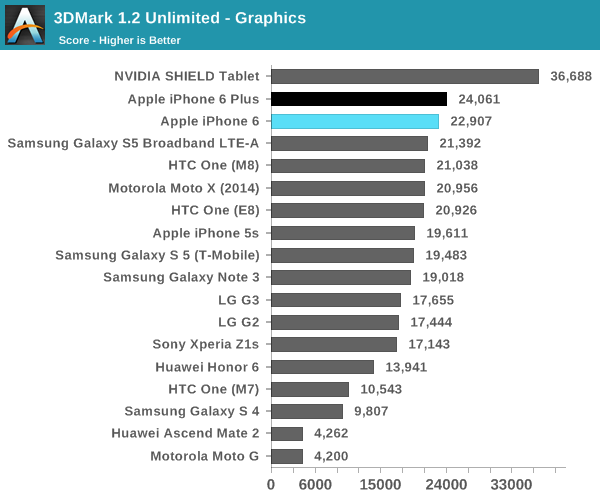
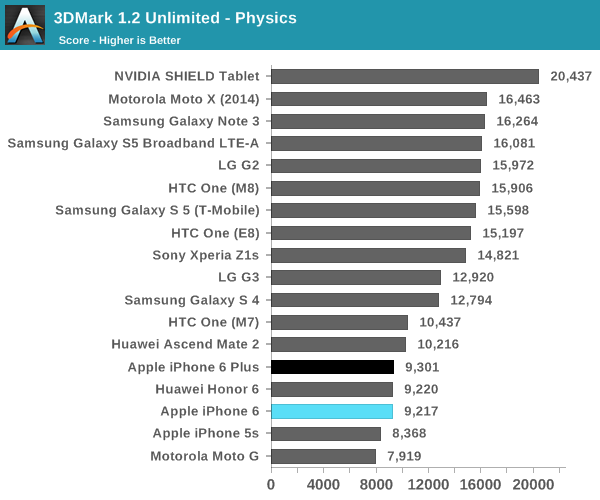
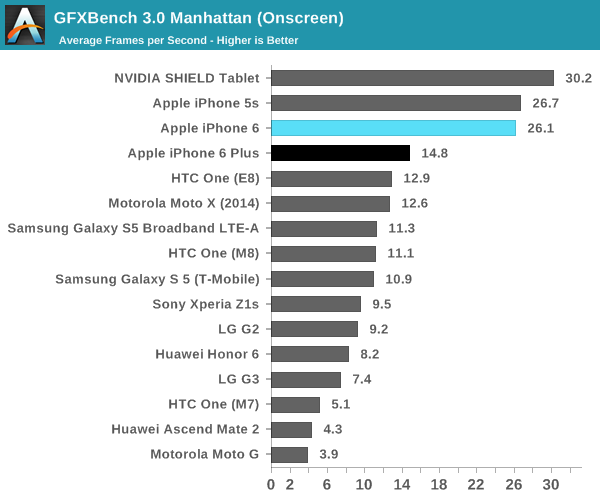
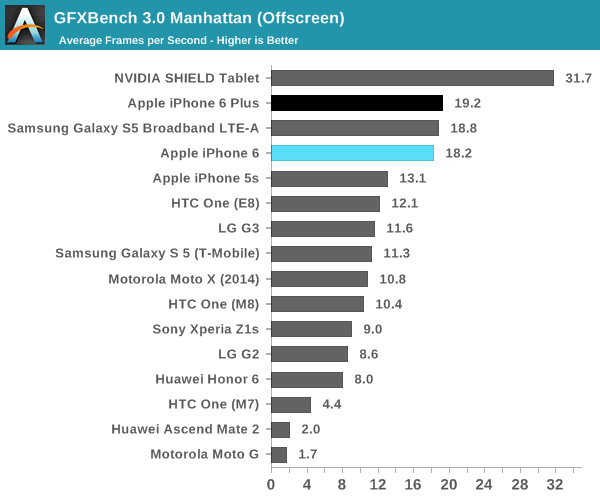
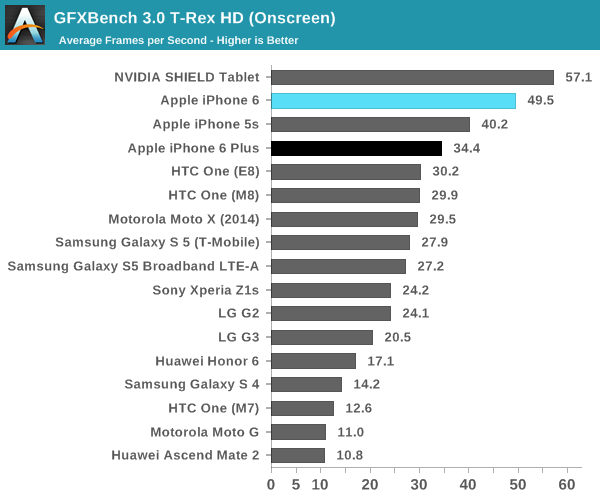
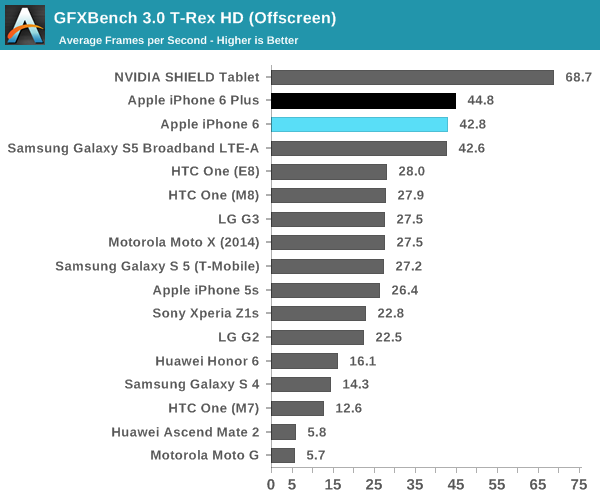
In in GPU benchmarks, we generally see a pretty solid lead over the competition for the iPhone 6/A8. It's seems quite clear that there is a significant impact to GPU performance in the iPhone 6 Plus due to the 2208x1242 resolution that all content is rendered at. It seems that this is necessary though, as the rendering system for iOS cannot easily adapt to arbitrary resolutions and display sizes. Before we wrap up this article though, I definitely need to address battery life. As with all of our battery life tests, we standardize on 200 nits and ensure that our workload in the web browsing test has a reasonable amount of time in all power states of an SoC.

As one can see, it seems that Apple has managed to do something quite incredible with battery life. Normally an 1810 mAh battery with 3.82V nominal voltage would be quite a poor performer, but the iPhone 6 is a step above just about every other Android smartphone on the market. The iPhone 6 Plus also has a strong showing, although not quite delivering outrageous levels of battery life the way the Ascend Mate 2 does. That's it for now, but the full review should be coming in the near future.










316 Comments
View All Comments
tipoo - Monday, September 22, 2014 - link
A5, A6, and A7 were all more like tocks. Four in a row would be too much to expect I guess. A8 is definitely a tick, modest performance gains, mostly efficiency gains.stingerman - Monday, September 22, 2014 - link
Performance per Watt and on that Metric, the A8 was a big improvementtipoo - Monday, September 22, 2014 - link
I think you have it reversed by the way, tocks are the big changes.http://www.dvhardware.net/news/intel_tick_tock_roa...
bigstrudel - Monday, September 22, 2014 - link
That's what he meant. A6 and A7 were ground up creations and "Tocks"KPOM - Monday, September 22, 2014 - link
You can only move to ARM v8 64-bit once. I'm surprised they improved as much as they did.name99 - Monday, September 22, 2014 - link
I wouldn't be as pessimistic as this. There are a number of improvements that Apple can add to their existing CPU/SoC that would improve performance substantially without compromising power. Most obvious (but by far the only) improvement would be a really robust and powerful turbo-ing system like Intel uses.The real reason for the lack of improvement, IMHO, is that it was not necessary this year, so Apple directed priorities in a different direction; most obviously I expect their best and most experienced designers were working on the S1 (for the aWatch) and the A8 was given over mostly to less experienced engineers as a learning project.
Next year (once the A57 devices are actually available, along with Denver and the various ARM server cores) there will be more compelling competition for Apple, and I'm guessing they already have a more substantial CPU/SoC boost planned for that.
yakuba - Monday, September 22, 2014 - link
The physics tests is one of the test that benefits heavily from multiple cores. Unless Apple decides to go beyond dual-core, their phones will lag in this test. It seems the small improvement in performance is due entirely to clock speed. Hopefully the detailed review will make this completely clear.whyso - Monday, September 22, 2014 - link
If you read the futuremark news release they specifically say that the A7 (and now A8) have poor random memory performance resulting in low benchmark scores. Arranging memory objects sequentially the A7 (and supposedly A8) shows the expected performance increases. However, this is a non trivial thing to do in a physics engine as objects are constantly entering and exiting the scene and you need physical memory space to place them in. This also shows in a few geekbench sub tests and is one of the 'glass jaws' flaws in the CPU design.Arbee - Tuesday, September 23, 2014 - link
This is by no means an A7/A8 specific issue; it's well known that doing heavily random data access is orders of magnitude slower than a sequential array even on Haswell (there's a well known whitepaper in the gamedev community that discusses this). The difference is mostly that the performance "cellar" is a lot higher on HWL than on mobile chips thanks to the higher clocks.user777 - Wednesday, September 24, 2014 - link
The tests are not quite correct - Samsung Galaxy S5 from February 2014 (not Galaxy Note 4) against Apple iPhone 6/6+ from September 2014. Let's wait for the Samsung Galaxy Note 4 tests.